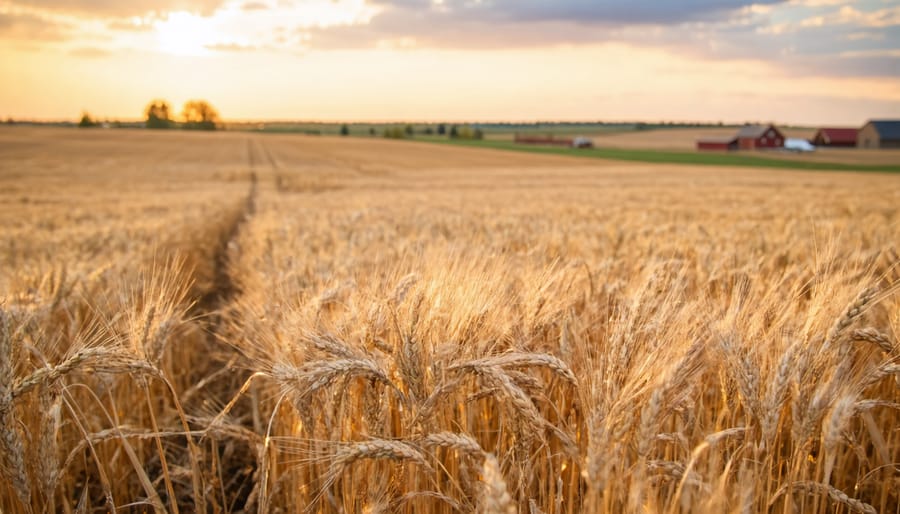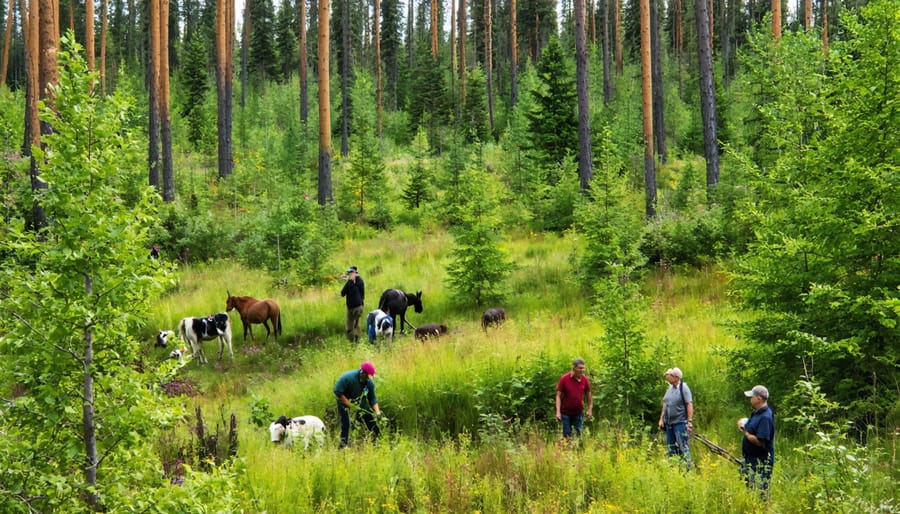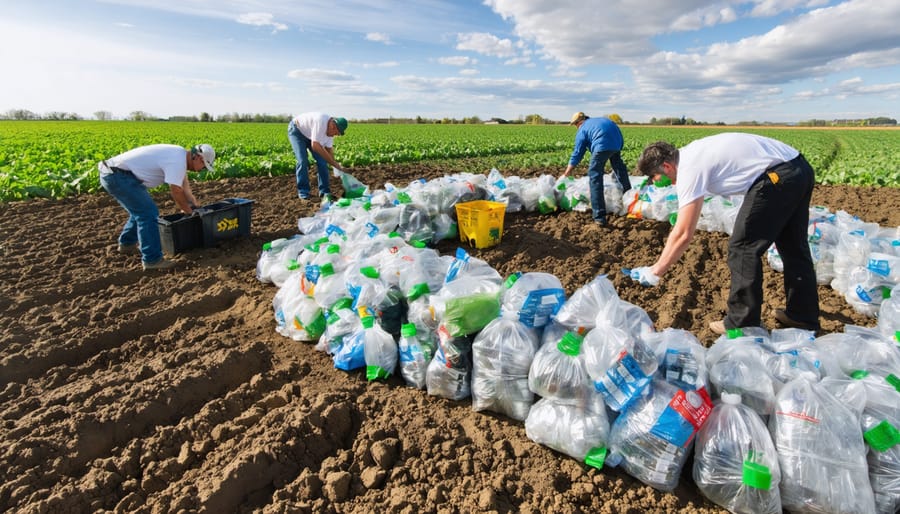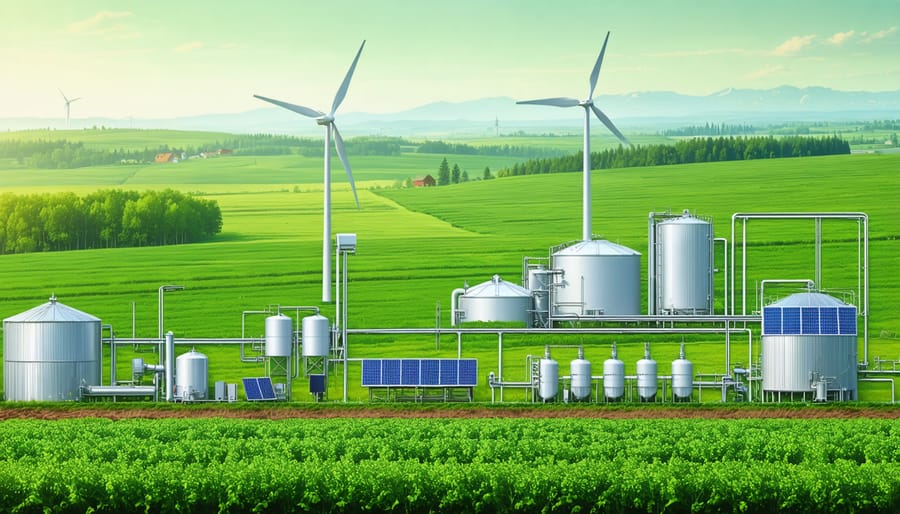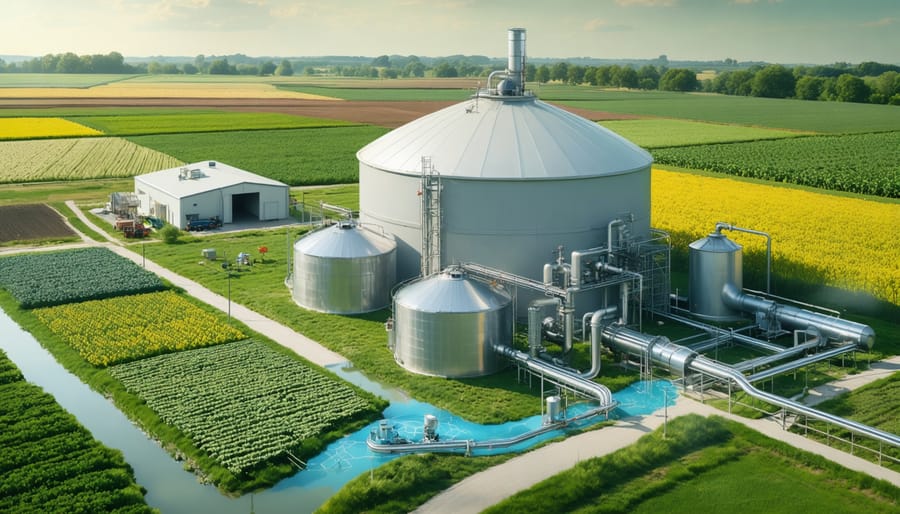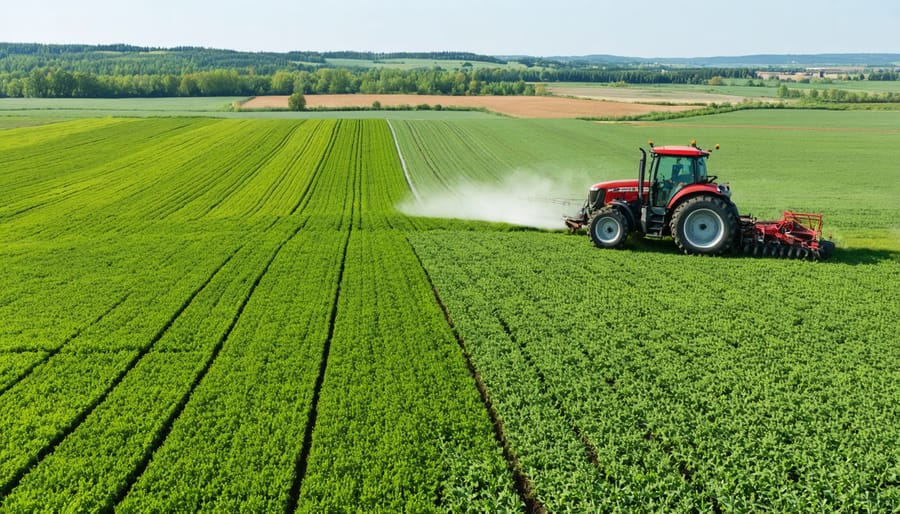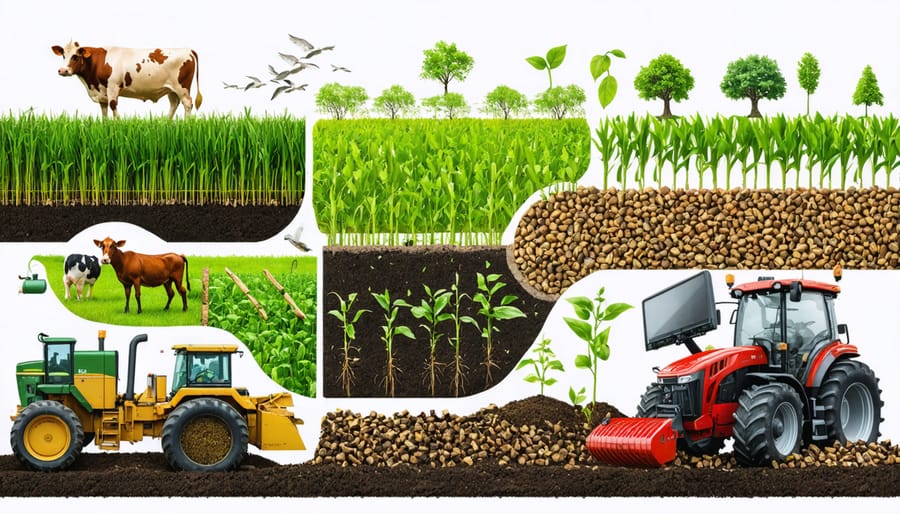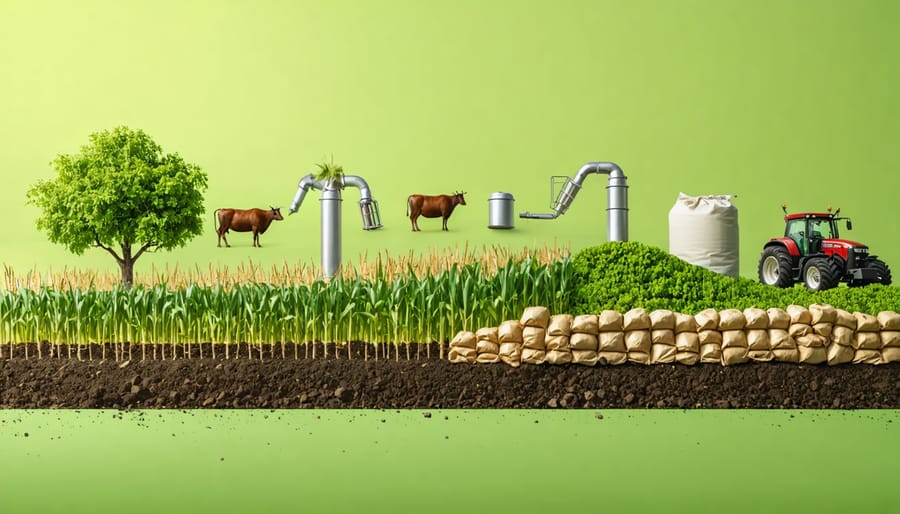In today’s competitive manufacturing landscape, eliminating waste isn’t just about cutting costs—it’s about survival. The legendary Toyota Production System identified seven fundamental types of waste that continue to plague modern manufacturers, costing Canadian facilities millions in lost productivity each year. From unnecessary inventory tying up valuable warehouse space in Edmonton’s industrial parks to excessive transportation eating into Alberta’s agricultural processing margins, these wastes silently drain resources across our production lines.
Recent studies show that Canadian manufacturers who successfully tackle these seven wastes experience an average 15-20% reduction in operating costs and a 25% increase in productivity. For agricultural processors handling seasonal harvests, understanding and eliminating these wastes becomes even more critical during peak production periods.
Whether you’re operating a small-scale food processing facility in rural Alberta or managing a large manufacturing plant in the industrial heartland, mastering the seven wastes—Transportation, Inventory, Motion, Waiting, Over-processing, Overproduction, and Defects—is your gateway to leaner, more profitable operations. Let’s explore how these wastes manifest in Canadian manufacturing environments and, more importantly, how to eliminate them using proven, practical solutions tailored to our unique industrial landscape.
Overproduction Waste: Turning Excess Into Opportunity
Smart Composting Systems
Modern smart composting systems are revolutionizing how Alberta farmers handle organic waste. These automated solutions combine temperature monitoring, moisture control, and aeration management to transform farm residuals into valuable compost within weeks instead of months.
Many local operations now use in-vessel composting units that process up to 2,000 kg of organic material daily while maintaining optimal conditions. These systems feature automated turning mechanisms and built-in sensors that alert farmers when conditions need adjustment, reducing labour costs and improving efficiency.
The latest technology includes mobile apps that track decomposition progress and nutrient levels, helping farmers produce consistent, high-quality soil amendments. Several Alberta farms report cutting organic waste disposal costs by 60% while creating a valuable secondary product. These systems work year-round, even during harsh prairie winters, thanks to insulated designs and temperature regulation features.
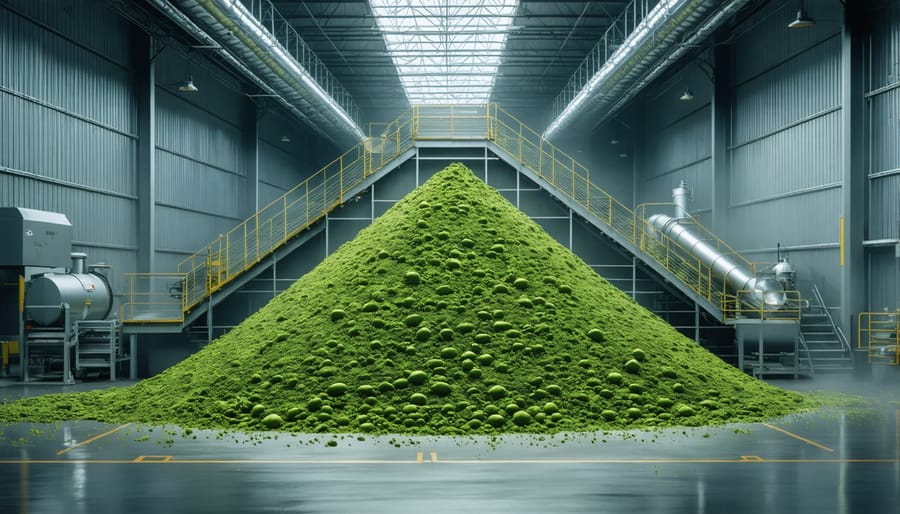
Biogas Production Solutions
Transforming organic waste into a valuable resource, biogas production solutions offer Alberta farmers a sustainable approach to waste management while generating renewable energy. By implementing anaerobic digestion systems, farms can convert livestock manure, crop residues, and food processing waste into biogas, which can be used for electricity generation or heating. These systems typically reduce methane emissions by up to 85% while producing nutrient-rich digestate for soil amendment. Local success stories, like the Lethbridge Biogas facility, demonstrate how these systems can process up to 120,000 tonnes of organic waste annually, providing clean energy for hundreds of homes. The initial investment in biogas technology is offset by reduced energy costs, carbon credits, and potential revenue from excess power sold back to the grid, making it an environmentally and economically sound solution for agricultural operations.
Transportation: Minimizing Waste in Movement
Route Optimization
Smart route planning for organic waste collection can significantly reduce transportation waste and improve operational efficiency on Canadian farms. By mapping out collection points and optimizing pickup schedules, farmers can minimize fuel consumption and vehicle wear while ensuring timely waste management.
For example, at the MacPherson Family Farm in Red Deer County, implementing a strategic collection route reduced their weekly fuel consumption by 25%. Their approach includes grouping collection points by proximity and scheduling pickups during off-peak hours to avoid traffic delays.
Consider these practical steps for route optimization:
– Map all waste collection points across your operation
– Group nearby collection points into zones
– Schedule pickups based on waste volume and decomposition rates
– Use weather forecasts to plan around optimal conditions
– Maintain flexible routing to accommodate seasonal changes
Many Alberta farmers have found success using digital routing tools specifically designed for agricultural operations, helping them save both time and resources while maintaining efficient waste management practices.
On-Site Processing Benefits
Bringing processing capabilities directly to your farm can significantly reduce transportation waste and enhance operational efficiency. By implementing on-site solutions like mobile grain cleaning units or portable processing equipment, you can eliminate unnecessary movement of materials between locations. For example, Prairie farmers using mobile seed cleaning services report savings of up to 40% on transportation costs while maintaining better control over their processing timeline.
Local processing also means fresher products and reduced fuel consumption. Many Alberta producers have found success with portable feed mills that convert crops into livestock feed right where it’s needed. This approach not only cuts down on transport expenses but also allows for just-in-time processing, reducing storage requirements and potential spoilage.
Consider establishing partnerships with neighbouring farms to share mobile processing equipment, creating a community-based solution that benefits everyone while minimizing individual investment costs. This collaborative approach has proven particularly effective in regions like Red Deer County, where farmers pool resources for shared processing facilities.
Inventory Management: Preventing Organic Spoilage
Temperature-Controlled Storage
Temperature fluctuations in storage facilities can lead to significant organic waste and reduced product quality. Here in Alberta, where temperatures can swing dramatically between seasons, proper storage temperature control is crucial. Many local farmers have found success using zone-specific cooling systems that maintain optimal conditions for different types of produce and organic materials.
Modern temperature-controlled storage solutions incorporate smart monitoring systems that alert farmers to any deviations from ideal temperatures. For example, the Thompson family farm in Red Deer reduced their produce waste by 32% after implementing a multi-zone storage system with automated temperature controls. These systems can be customized for various crops, from root vegetables requiring 1-4°C storage to grains that need precise moisture and temperature regulation.
To maximize efficiency, consider grouping products with similar temperature requirements together and implementing a regular maintenance schedule for cooling equipment. This approach not only reduces waste but also extends shelf life and maintains product quality throughout the storage period.
Digital Tracking Systems
Modern digital tracking systems have revolutionized how Alberta farmers manage inventory and reduce waste. These smart solutions use barcode scanners, RFID tags, and cloud-based software to monitor feed, seed, and equipment in real-time. Local success stories, like the Thompson Family Farm in Lethbridge, show how implementing digital tracking reduced their grain storage losses by 15% in the first year.
These systems help farmers maintain optimal stock levels by sending automatic alerts when supplies run low and tracking expiration dates for perishable items. Many Alberta producers use mobile apps to scan and track items right from their tractors or grain bins, making inventory management seamless even during busy seasons.
For smaller operations, simple spreadsheet-based tracking systems can be equally effective. The key is choosing a solution that matches your farm’s scale and needs. Local agricultural equipment dealers often provide training and support for implementing these systems, making the transition smoother for farming communities.
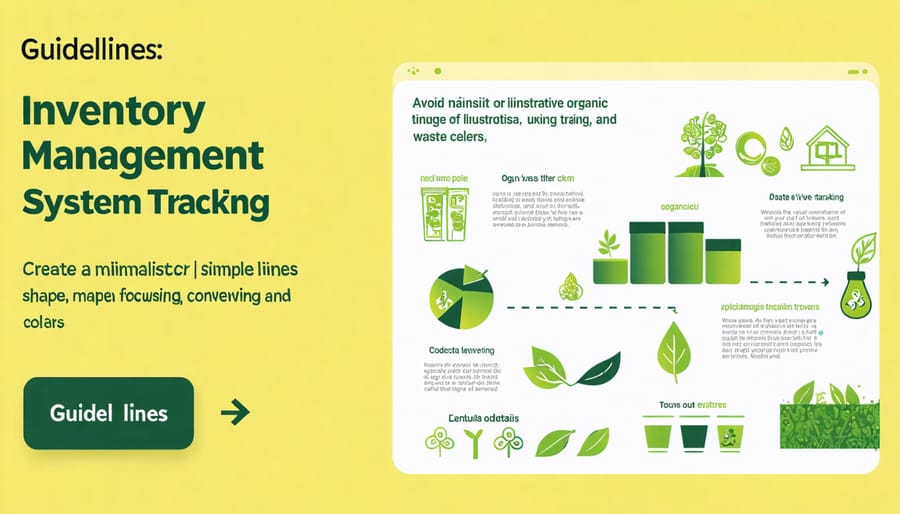
Processing: Streamlining Organic Waste Treatment
Automated Sorting Systems
Modern automated sorting systems are revolutionizing how Prairie farmers handle agricultural waste separation. These systems use advanced sensors, cameras, and artificial intelligence to efficiently categorize different types of organic materials, reducing labour costs and improving recycling efficiency.
At the Henderson Farm in Red Deer, a recently installed optical sorting system separates crop residues with 95% accuracy, directing materials to either composting or biofuel production. The system processes up to 2 tonnes per hour, significantly reducing manual sorting time and physical strain on workers.
Similar technologies are being adopted across Alberta, with conveyor-based systems that can identify and separate materials based on size, density, and composition. These systems are particularly effective for sorting grain screenings, damaged produce, and processing by-products.
For smaller operations, portable sorting units are available through equipment-sharing programs, making this technology accessible to family farms while maintaining cost-effectiveness.
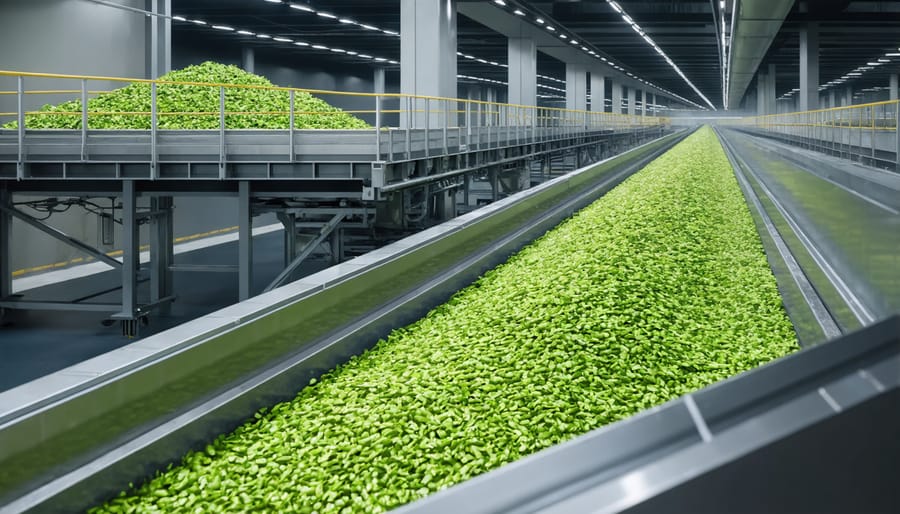
Value-Added Processing
In modern agriculture, converting waste into marketable products has become a game-changing strategy for Canadian farmers. Value-added processing transforms agricultural by-products into valuable resources, significantly reducing waste while creating new revenue streams. For example, many Alberta farmers now process damaged crops into animal feed supplements, convert organic waste into premium compost, or use crop residues for biomass energy production. This approach not only minimizes environmental impact but also strengthens farm sustainability. Local success stories include dairy farms producing artisanal cheese from excess milk and grain producers creating specialty flour from previously discarded wheat varieties. By implementing these processing techniques, farmers can turn potential waste into profitable ventures while contributing to a more sustainable agricultural sector.
Defects: Quality Control in Organic Processing
Prevention Strategies
In Alberta’s agricultural sector, implementing proactive quality control measures is crucial for minimizing manufacturing waste. Start by establishing clear standard operating procedures (SOPs) for each process, incorporating regular equipment maintenance schedules and quality checkpoints. Train team members to identify potential issues before they escalate, using visual management tools like colour-coding and clear labelling systems.
Consider implementing a “First In, First Out” (FIFO) inventory management system for perishable agricultural inputs and products. Regular audits of production processes can help identify bottlenecks and inefficiencies early. Document all procedures and maintain detailed records of quality checks, making it easier to track patterns and make improvements.
Engage workers in continuous improvement initiatives by encouraging feedback and suggestions. Set up quality circles where team members can discuss challenges and propose solutions. Remember, prevention is always more cost-effective than correction, especially in agriculture where timing and product quality are critical for success.
Recovery Solutions
In Alberta’s farming community, we’ve developed effective strategies to reclaim materials that might otherwise go to waste. For instance, imperfect produce can be processed into value-added products like jams, preserves, or animal feed. Many farmers have found success by partnering with local food banks and community kitchens to redirect surplus crops that don’t meet market standards.
Materials sorting and grading systems help identify items that can be repurposed. Damaged grain can often be used for composting or biofuel production, while bruised fruits and vegetables might be perfect for juice processing. Some innovative farmers have established relationships with local breweries and distilleries to convert imperfect grains into beverages.
Equipment maintenance waste, such as used oils and worn parts, can be recycled through certified facilities. Many agricultural cooperatives now operate shared recycling programs, making it more economical for individual farms to participate in responsible waste management practices. This collaborative approach has helped reduce disposal costs while supporting environmental sustainability across our farming communities.
Motion: Ergonomic Waste Management
Workplace Layout Optimization
Optimizing your workspace layout is crucial for efficient waste management in agricultural operations. On farms across Alberta, strategic placement of processing equipment, storage areas, and disposal points can significantly reduce unnecessary movement and improve workflow efficiency. Consider the natural flow of your operation – from receiving organic materials to processing and final disposal.
Take inspiration from Prairie Organic Farm in Red Deer, which reduced travel time by 40% by redesigning their composting facility layout. They positioned their shredding equipment closer to material storage areas and created dedicated lanes for vehicle movement. Simple changes, like placing frequently used tools within arm’s reach and establishing clear zones for different activities, can save valuable time and energy.
For optimal results, map out your current movement patterns and identify areas where distance or obstacles create inefficiencies. Remember to consider seasonal changes in your operation and plan flexible spaces that can adapt to varying waste volumes throughout the year.
Automation Integration
Automation integration plays a vital role in reducing manual handling waste on Canadian farms. By implementing smart technology solutions, farmers can streamline operations and minimize unnecessary movement of materials and products. For example, automated feeding systems in livestock operations can reduce labour requirements by up to 40% while ensuring consistent feed distribution.
At the Morrison Family Farm in Lacombe, Alberta, the installation of automated grain handling equipment decreased manual labour hours by 60% during harvest season. This system not only improved efficiency but also reduced worker fatigue and potential workplace injuries.
Consider starting with small-scale automation projects, such as automated irrigation systems or robotic milking stations, which can provide immediate benefits while building towards larger automation goals. When selecting automation solutions, focus on equipment that addresses multiple waste points simultaneously, such as systems that combine sorting, cleaning, and packaging functions.
Remember to involve your farm team in automation decisions, as their practical experience can help identify the most beneficial areas for technological integration.
Waiting: Time Management in Organic Processing
Process Synchronization
Effective process synchronization in agricultural waste management involves coordinating all activities to maintain a smooth, continuous flow. On our Alberta farms, this means aligning harvest schedules with composting timelines and ensuring proper resource allocation. For example, when managing organic waste from livestock operations, timing the collection and processing can prevent bottlenecks and reduce storage requirements.
Many successful farms in our region use visual management boards to track waste movement and processing stages. These simple tools help team members coordinate their efforts and identify potential delays before they impact operations. Regular team huddles, especially during peak seasons, ensure everyone understands their role in the waste management process and can respond quickly to any challenges.
Working with neighbouring farms to synchronize waste collection and processing can also create efficiencies and reduce costs through shared resources and equipment.
Quick Response Systems
Quick response systems are essential for minimizing downtime in agricultural waste processing. At the MacKenzie Valley Farm in Alberta, implementing visual management boards and daily huddles reduced waste handling delays by 45%. These systems help track equipment maintenance schedules, monitor processing capacity, and alert staff to potential bottlenecks before they become issues. Farm managers can use simple tools like colour-coded bins and digital monitoring systems to maintain smooth operations. Regular team check-ins, typically lasting 10-15 minutes, ensure everyone stays informed about waste processing targets and challenges. This proactive approach has helped many Canadian farms maintain consistent composting schedules and reduce organic waste accumulation, particularly during peak harvest seasons.
Implementing the 7 wastes framework in agricultural operations offers significant opportunities for Alberta farmers to optimize their operations and boost profitability. By focusing on reducing transportation waste, minimizing inventory excess, and streamlining processes, farms can achieve remarkable efficiency gains while supporting circular agricultural practices. Success lies in starting small, measuring results, and gradually expanding improvements across operations. Regular team meetings, clear communication channels, and consistent monitoring of waste reduction efforts ensure lasting positive change. Remember, eliminating waste isn’t just about cutting costs—it’s about building more resilient, sustainable farming operations that benefit our communities and environment. By embracing these principles, Canadian farmers can lead the way in agricultural innovation while maintaining their competitive edge in the global market.


